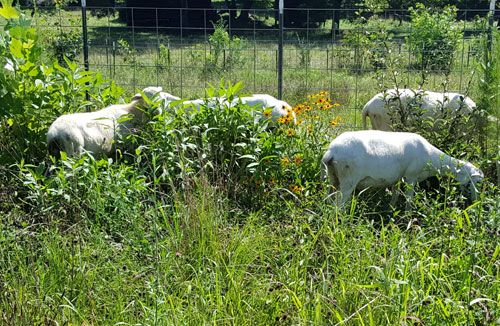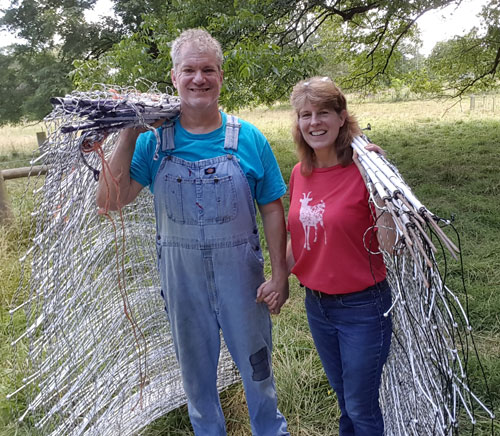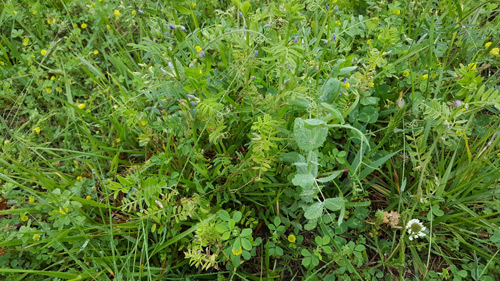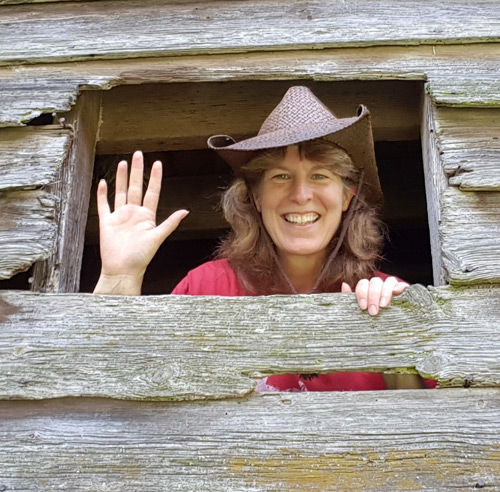 I hear a lot of people saying that they want to ‘do it right’ when they start regenerative grazing. That is a noble goal, but in truth it’s a hard one to nail down.
I hear a lot of people saying that they want to ‘do it right’ when they start regenerative grazing. That is a noble goal, but in truth it’s a hard one to nail down.
Do it right for whom? The animals? The soil health? The wildlife? For you? None of these can be separated from any of the others. It is always a balancing act because so much depends on other factors that may be out of your control, like the time of year, animal status, weather, your health and time availability.
The difference in advice from experts should give us a clue that there is no perfect way to regeneratively graze. The experts’ recommended stocking densities vary dramatically. Which one is right? You may be surprised by my answer.
Let’s talk about four common misconceptions of ‘Doing it Right’:
- I want to do it right, from the start!
- The higher the stocking density, the better!
- The more you move the better it is!
- I don’t want to have to feed hay!
I want to do it right, from the start!
 Well, the bigger issue is just to get started! I procrastinated for about 15 years before actually starting. I decided to rotationally graze 20 years ago, bought the netting 15 years ago, and actually STARTED 5 years ago. There really is no wrong way to start. You just have to get out there and watch your animals and your forage and start trying different things. Everyone’s farm is different, so you are not behind, and you aren’t doing it wrong. If you are thinking about it and asking questions and making an effort, you are doing it right!
Well, the bigger issue is just to get started! I procrastinated for about 15 years before actually starting. I decided to rotationally graze 20 years ago, bought the netting 15 years ago, and actually STARTED 5 years ago. There really is no wrong way to start. You just have to get out there and watch your animals and your forage and start trying different things. Everyone’s farm is different, so you are not behind, and you aren’t doing it wrong. If you are thinking about it and asking questions and making an effort, you are doing it right!
Greg Judy tells a story about an elderly grazer who desperately wanted to start rotational grazing after hearing Greg speak. After thinking it through, Greg helped him set up a single line through his pastures, splitting his pastures into two paddocks. The farmer was tickled pink. Was it the right way to do it, with only two paddocks? Yes, indeed, in this case it was. He didn’t have the physical ability to move a lot of fencing and waterers on a regular basis, so this was the best alternative. ‘Right’ is a relative scale which has to include the farmer’s life factors, including health and available time.
I took an Introduction to Holistic Management course this past fall, and the biggest surprise for me was that only a tiny portion of the course taught us about actual grazing. The rest was evaluating my goals, my family’s goals(!), my facilities and my available time to figure out the best solution for my farm. In figuring out the ‘right’ way to do things, we have to take a holistic view of all of the factors in the farming equation.
The higher the stocking density, the better!
It looks like mob grazing, with very high densities for very short durations and long rests (at least 45 days) may not be as beneficial as initially thought. Look up Dennis Hancock’s summary of the scientific literature on mob grazing. His research shows that mob grazing comes in second to rotational grazing in areas such as animal performance, organic matter, consumption vs. trampling, mulch left, soil temperature and moisture, and soil compaction. Evidently, pushing the system toward mob grazing is not the holy grail of grazing. You can stop stressing about trying to push for higher densities! Whew! Now don’t you feel better?
The more you move the better it is!
I know a woman who moved her cattle four times a day. Yeah, that’s a LOT! Did her animal performance improve? Why yes, unsurprisingly, yes it did. Did it run her ragged? Actually no. She was going through a rough patch and needed that quiet time to herself and with her animals. It brought her peace and joy. Note that she did not continue this long-term because her life changed again, and she was no longer able to spend that time moving the animals. That was OK too.
Moving your animals can be really good for them, but it may at the same time be really bad for you. Sometimes life doesn’t let you enact your plans like you want. You can always drop back to Plan B. And that’s OK.
I don’t want to have to feed hay ever again!
This is probably the goal I hear most from regenerative grazers, and to be honest I had this goal until just recently. Going without hay is actually possible, even in the driest drought, as long as I am willing to partially (or fully) destock. That’s a tough one for me, especially since I’ve become attached to my breeding stock.
 My hay feeding went down by 50% the first year I regeneratively grazed, but I realized in the following years that feeding hay was not a bad thing. It serves several stacking functions. If I feed by spreading the hay out on new pasture every day when needed, I feed the animals and give habitat and food to the soil microbes. Hay covers the soil to keep the pounding of raindrops from loosening the top layer of soil during a storm, causing erosion. Hay gives me infinite options to hold my animals back in the summer if the next paddock is not ready to graze. Feeding hay in the spring along with lush grass keeps the animals’ digestive systems going and prevents bloating and the squirts. I have found, for now, that my regenerative grazing includes hay every season of the year.
My hay feeding went down by 50% the first year I regeneratively grazed, but I realized in the following years that feeding hay was not a bad thing. It serves several stacking functions. If I feed by spreading the hay out on new pasture every day when needed, I feed the animals and give habitat and food to the soil microbes. Hay covers the soil to keep the pounding of raindrops from loosening the top layer of soil during a storm, causing erosion. Hay gives me infinite options to hold my animals back in the summer if the next paddock is not ready to graze. Feeding hay in the spring along with lush grass keeps the animals’ digestive systems going and prevents bloating and the squirts. I have found, for now, that my regenerative grazing includes hay every season of the year.
My pastures have responded energetically to this treatment. The forage is SO much better than it’s ever been, and my stocking rate has increased by 50%. Eventually, I may be able to cut back on my hay some, when I get my soil health really humming, but I never plan to go completely hay-less. Do some people go hayless? Yes. Are they doing it right? Probably, because it would be cutting into their bottom line if not. Am I doing it right? Definitely. For now, for my situation.
Don’t hold yourself to an impossible ideal of how to do it ‘right’. Do your best to nurture your animals and soil health, but don’t forget to nurture yourself. Just like in the airplane safety demonstrations, if you don’t take care of yourself first, you won’t be able to take care of others (including the animals and all of those lovely soil microbes!)
Healthy soils to you!
 Kirsten Holland Robertson is a regenerative farmer and SWCD Educator in Greenville, SC. In addition to growing her own vegetables and raising her own sheep and goats in a dynamic permaculture based, holistically managed agroforestry silvopasture system, Kirsten manages the lively Facebook ReGenerative Grazing community group. After finding Vail and joining the Grazing Power community, she has joined our team, partnering with SimpleSoilSolutions.com to create holistic grazing and soil building mentorship programs, and offers us support. Look for RegenaGraze.com.
Kirsten Holland Robertson is a regenerative farmer and SWCD Educator in Greenville, SC. In addition to growing her own vegetables and raising her own sheep and goats in a dynamic permaculture based, holistically managed agroforestry silvopasture system, Kirsten manages the lively Facebook ReGenerative Grazing community group. After finding Vail and joining the Grazing Power community, she has joined our team, partnering with SimpleSoilSolutions.com to create holistic grazing and soil building mentorship programs, and offers us support. Look for RegenaGraze.com.
Speak Your Mind